IR & NMR spectroscopy
1/32
There's no tags or description
Looks like no tags are added yet.
Name | Mastery | Learn | Test | Matching | Spaced |
|---|
No study sessions yet.
33 Terms
Double bond region
1850-1630
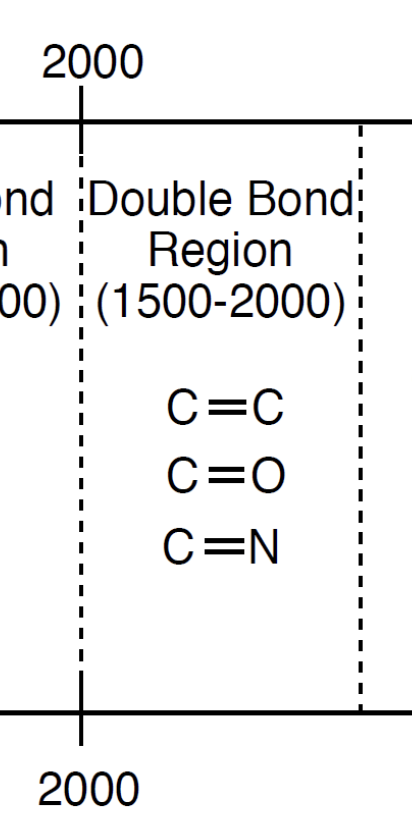
aldehyde
two weak bands 2900-2700 cm-1
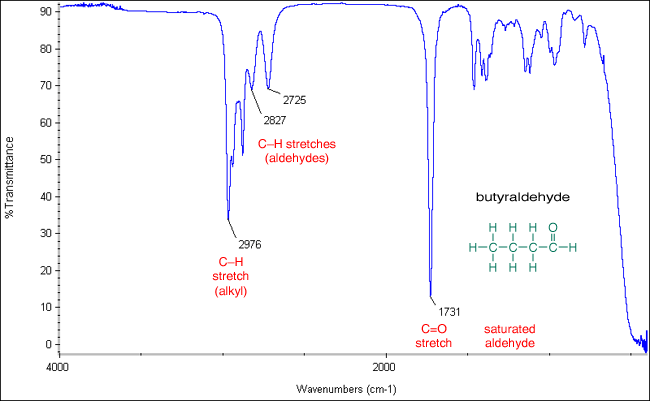
carboxylic acid
very broad band, 3100-2600 cm-1 AND double bond band ~1700 cm-1

ester
two bands, usually strong, 1000-1300 cm-1
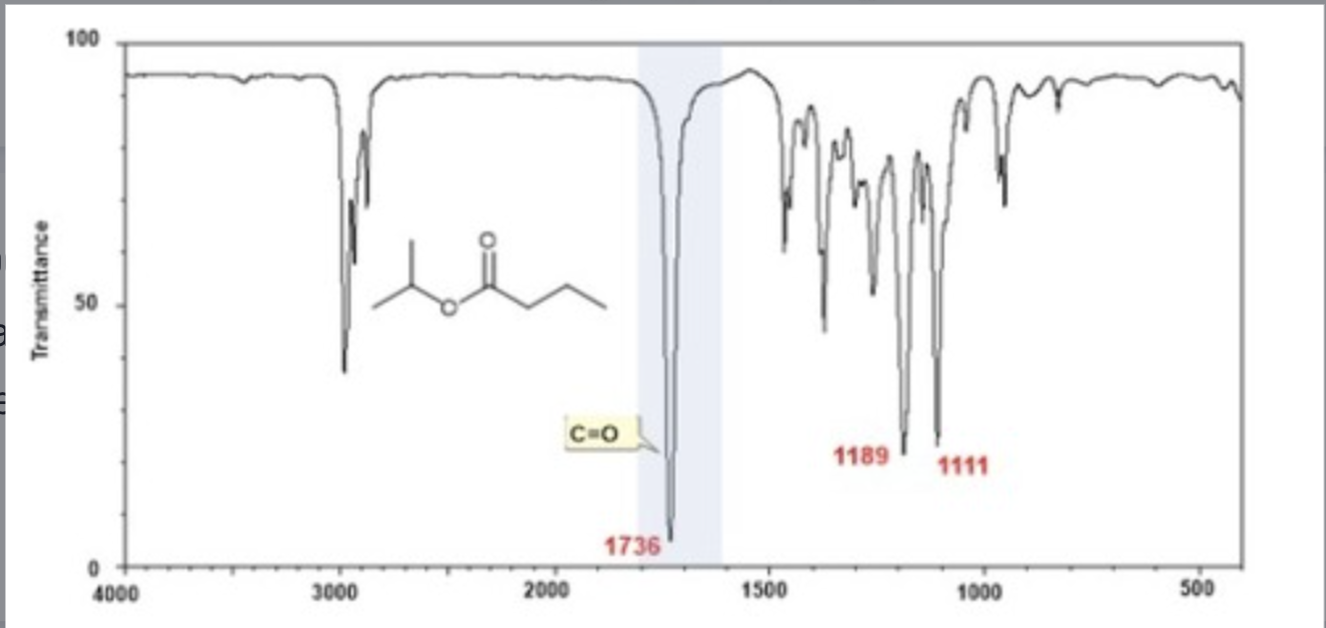
OH NH region
4000-2500 cm-1
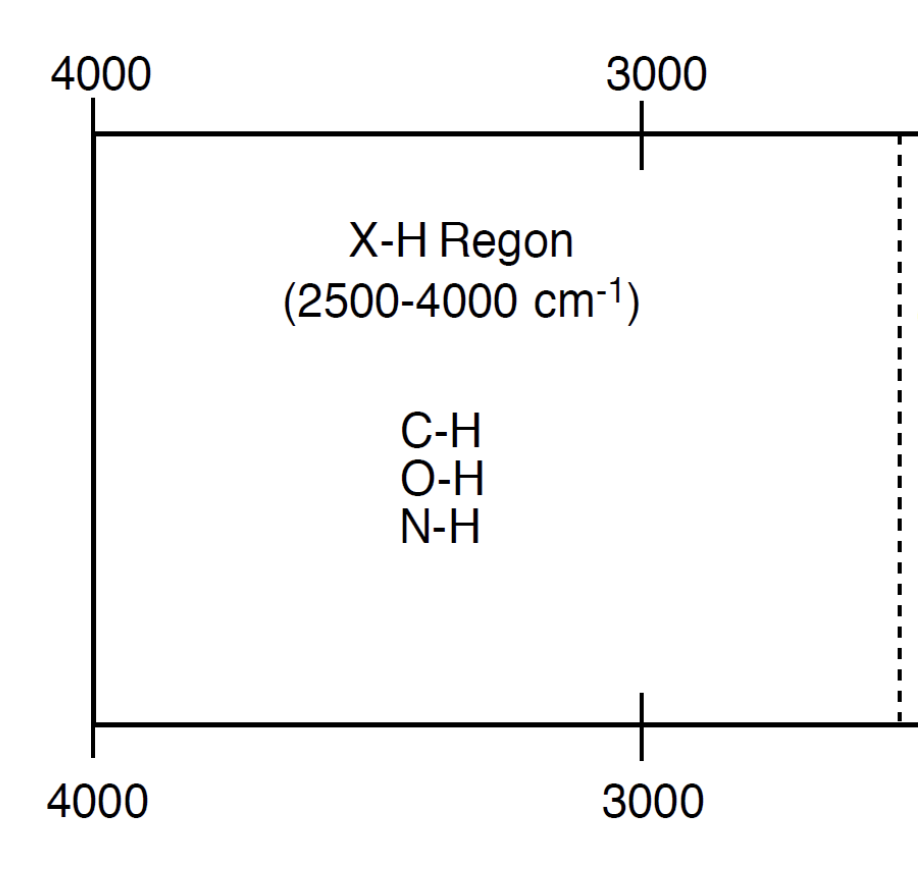
Alcohol
Strong broad band present in 3600-3000 cm-1 region

Primary Amine
Double medium bands present in 3300-3500 cm-1 region
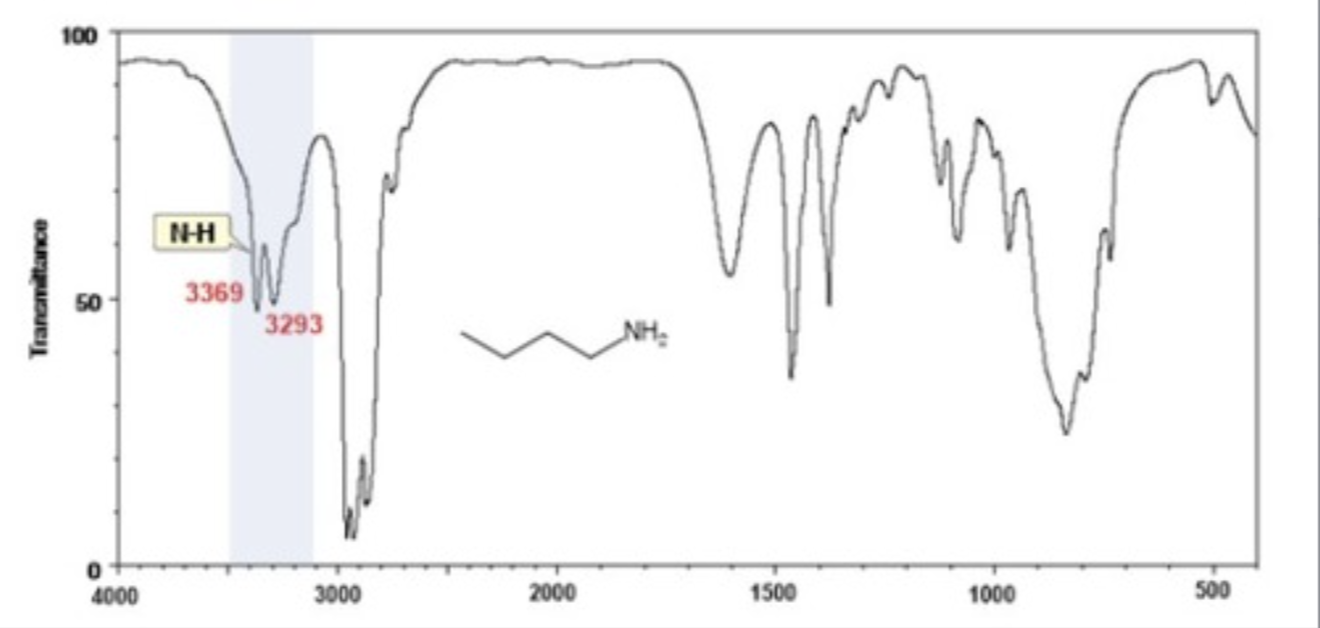
Ketone
one band ~1700 cm-1, nothing in OH NH range
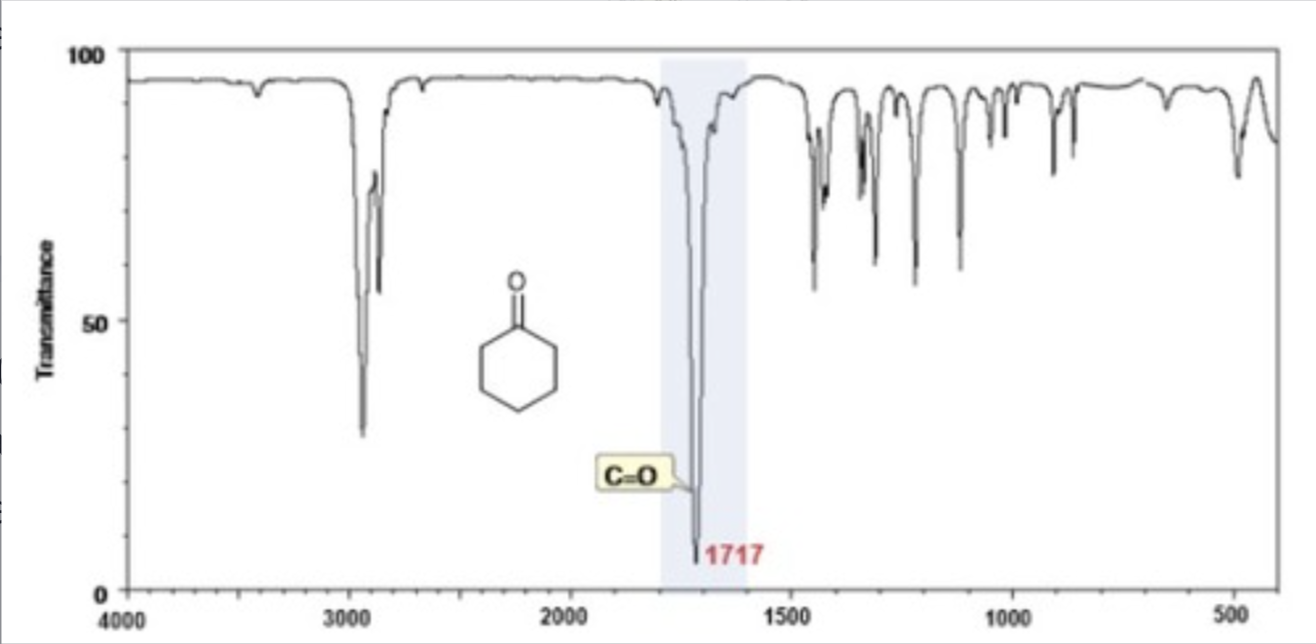
CH region
2850-3000 cm
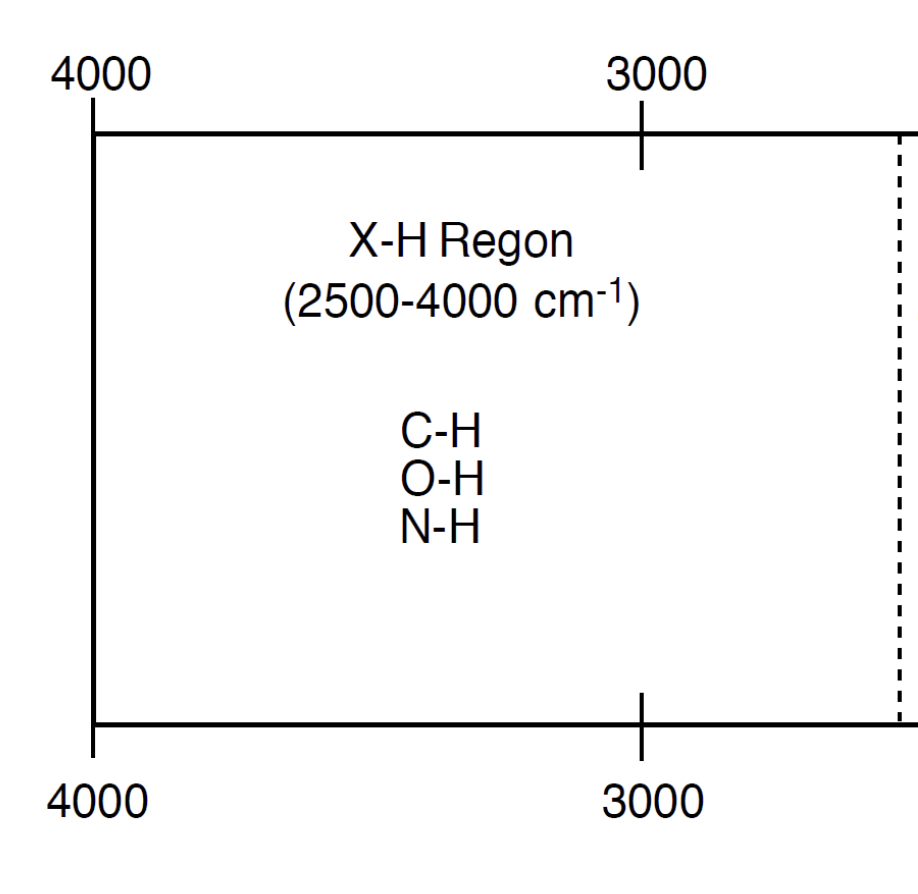
Secondary Amine
Single medium band present in 3300-3500 cm-1 region

Terminal Alkyne
~3300 cm-1, sp region, sharp (might see peak ~2200 cm-1 also)
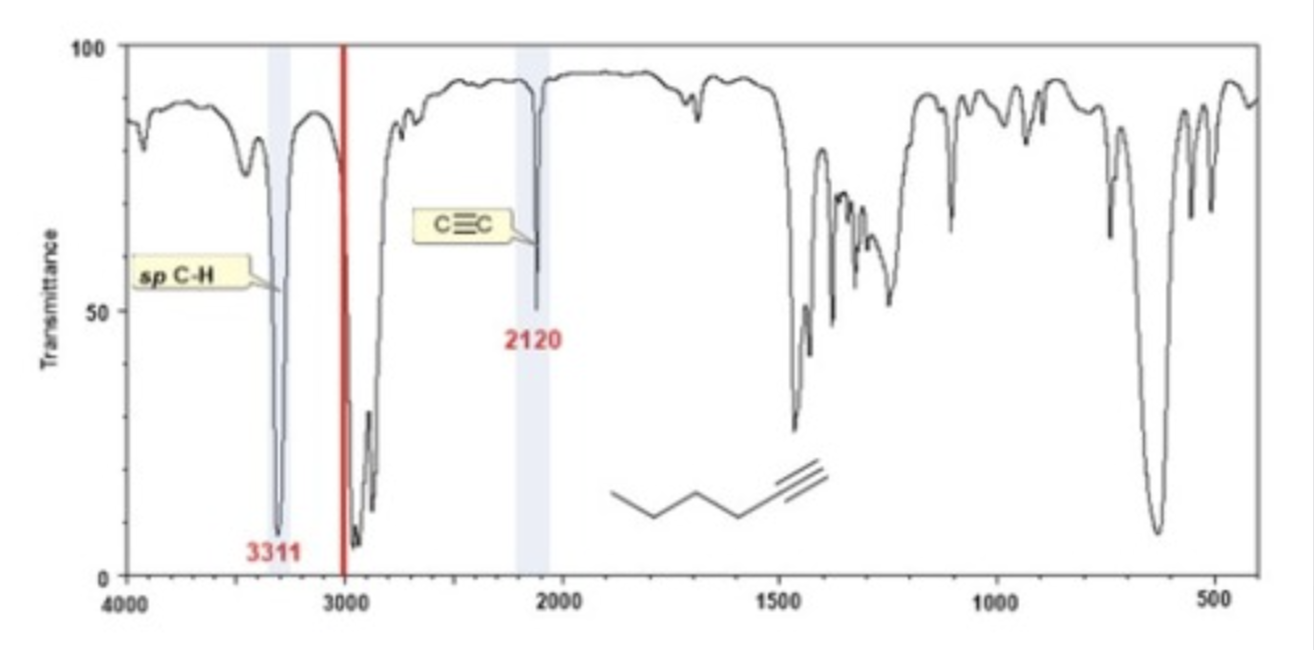
Terminal Alkene
3000-3100 cm-1,sp2 region, sharp
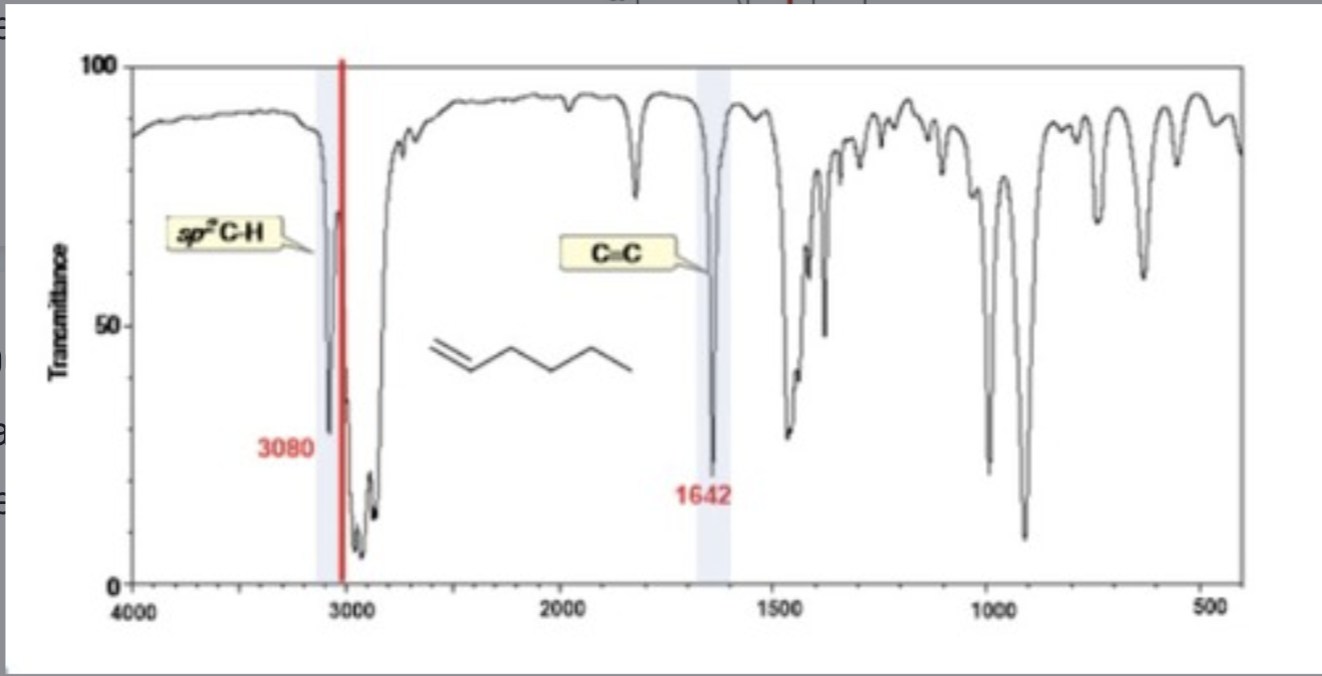
alkane/sp3 CH
2950-2850 cm-1

triple bond region
2000-2500 cm-1
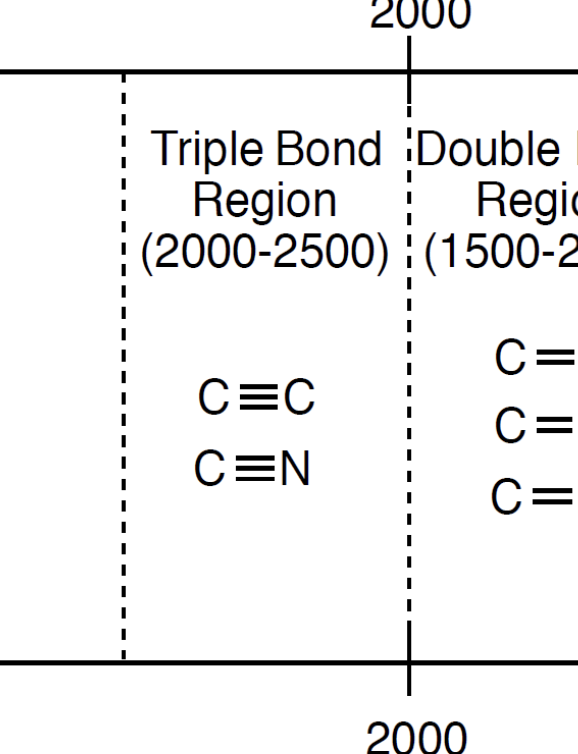
Nitrile
Strong band 2280-2100 cm-1
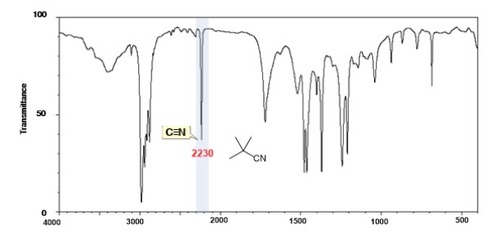
internal Alkyne
weak band 2250-2100 cm-1 (weaker than terminal)

Ether
C-O single bonds (1250-1050 cm-1)
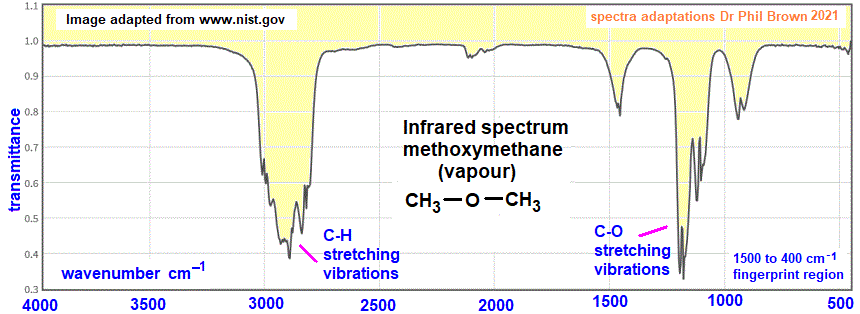
NH2 bend
~1650 cm-1
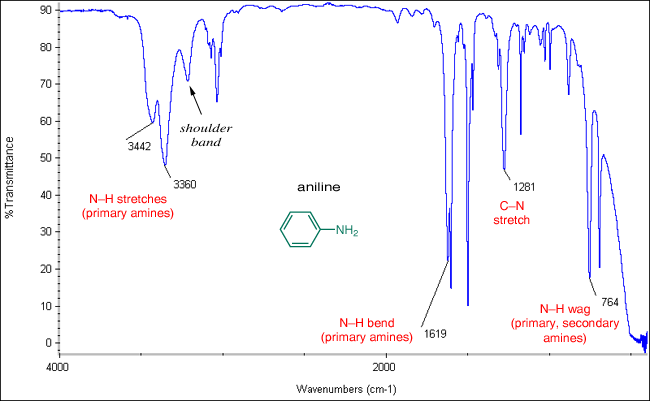
CO double bond
narrow band 1800-1650cm-1
internal Alkene CC
Medium band ~1650-1550 CC bond

chemical shift for aldehyde
9-10

chemical shift for carboxylic acid
10-12
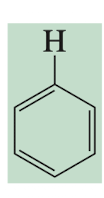
chemical shift phenyl
7.2 (6.5-8)
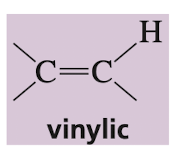
chemical shift vinylic
4-5
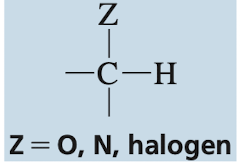
chemical shift
2.5-4.5

chemical shift allylic
1.5-2.5
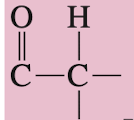
chemical shift
2.5
chemical shift R-CH3
0.85
upfield
e- rich, shielded, smaller ppm
downfield
e- poor, deshielded, larger ppm
degree of unsaturation
(2C + 2 + N - X - H) / 2
signal integration
area under a signal is proportional to the relative # of Hs producing the signal
Signal multiplicity & coupling constant (J)
N+1 where N = # of equivalent H bonded to adjacent carbons